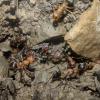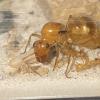- Formiculture.com
- Forums
- Gallery
- Members
- Member Map
- Chat

Science fair ideas?
Started By
Virginian_ants
, Nov 1 2023 11:22 AM
23 replies to this topic
#21
 Offline
-
Posted November 22 2023 - 11:27 AM
Offline
-
Posted November 22 2023 - 11:27 AM
I agree it would be difficult if not impossible.
But, you could contact a laboratory like the Brackenridge Field Laboratory at the University of Texas for biological control research or the USDA-ARS for their work on venom as a natural fungicide.
Otherwise you would likely want to pick a different topic.
But, you could contact a laboratory like the Brackenridge Field Laboratory at the University of Texas for biological control research or the USDA-ARS for their work on venom as a natural fungicide.
Otherwise you would likely want to pick a different topic.
#22
 Offline
-
Posted November 22 2023 - 9:08 PM
Offline
-
Posted November 22 2023 - 9:08 PM
I may do that.
#23
 Offline
-
Posted December 4 2023 - 1:34 PM
Offline
-
Posted December 4 2023 - 1:34 PM
I am still in awe of the video of Gigantiops destructor reading "road signs" and running down a maze. I don't have concrete ideas, but it would be kinda fun (I think) to use olfactory cues and see if ants can learn to use those as navigation guides ... perhaps some experiment with colored light and navigation ... or something of that sort. Something to do with maze running.
Formiculture Journals::
Veromessor pergandei, andrei; Novomessor cockerelli
Camponotus fragilis; also separate journal: Camponotus sansabeanus (inactive), vicinus, laevigatus/quercicola
Liometopum occidentale; Prenolepis imparis; Myrmecocystus mexicanus (inactive)
Pogonomyrmex subnitidus and californicus (inactive)
Tetramorium sp.
Termites: Zootermopsis angusticollis
Isopods: A. gestroi, granulatum, kluugi, maculatum, vulgare; C. murina; P. hoffmannseggi, P. haasi, P. ornatus; V. parvus
Spoods: Phidippus sp.
#24
 Offline
-
Posted December 4 2023 - 3:50 PM
Offline
-
Posted December 4 2023 - 3:50 PM
That sounds cool.
0 user(s) are reading this topic
0 members, 0 guests, 0 anonymous users
















